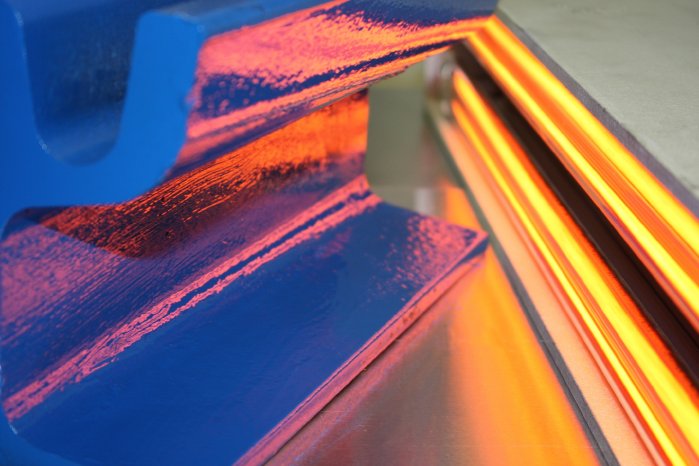Infrared transfers energy to materials without contact, generates heat where it is required and consequently is especially efficient in the drying of varnishes or the melting of powder coatings. In a UV curing process, polymerization, photo-initiators are activated by intensive UV light and cured in a fraction of a second. As a result, the material is cured very quickly and the surface is dry, wear-resistant and can be subjected to further processes immediately. In some applications, the curing can be optimized and carried out more efficiently by a combination of infrared heat with UV radiation. These applications include high quality surface coatings and surfaces which must be scratch resistant.
Plastic surface are given a scratch-free coating, to impart a mirror finish. Fingerprint-resistance prevents smearing of the highly polished surfaced by fingerprints, hand cream or suntan lotions. Such coatings are often UV coatings, which need UV radiation to initiate the cross-linkage. This cross-linkage reaction occurs more efficiently at higher temperatures and can be further optimized by pre- or post-heating. For this reason, some plastic components such as radio fascias, gear sticks or lipstick casings are often pre-heated with infrared. This provides an improvement in the coating properties.
Infrared Emitters Provide Very Efficient Curing of Coatings on Many Materials
Infrared heating has already proved successful in the drying of coatings, as infrared radiation penetrates into the material, at a depth depending on the material, and dries the coating film from the inside outwards. Skin or bubble-formation on the surface is prevented and coating drying is accelerated. The result is a brilliant surface quality. Infrared emitters transfer heat in a contact-free and efficient manner, with the aid of electromagnetic waves, which generate the heat first in the coated material. Unlike hot air systems, infrared heating minimizes the adhesion of spurious particles in the sensitive coating during drying.
Radiation, which is precisely matched to the product and coating, is quickly converted into heat where it is required. It vaporizes water or other solvents, while the material and the immediate environment remain cooler. For example, medium wave infrared radiation is particularly well absorbed by water. Consequently, it is particularly good for water-based coatings.
IR heating is also ideal for web substrates such as paper, textiles and foils, where IR heat dries coatings within seconds. IR heat dries large three dimensional objects such as engine blocks or metal housings faster than some hot air systems, as metal is a very good conductor of heat and infrared emitters transfer large amounts of energy in a very short time.
UV Lamps Cure in Seconds in a Targeted Fashion
UV radiation allows UV paints, lacquers and adhesives to cure very quickly. In contrast to conventional coatings UV formulations contain little or no solvents. In a UV curing process, polymerization, photo-initiators are activated by intensive UV light. Chemical compounds are then broken down and then cross link to form new compounds. In fractions of a second, the cross-linked system is dry and abrasion-proof and is suitable for further processing.
Today, there are already light sources doped with Gallium or mercury. Their wavelengths determine the point of the curing: in the depth of the coating or on the surface. The optimum curing process is affected by different factors. The emission spectrum and intensity of the UV light source, the carrier material and ambient temperature, the nature and thickness of the material to be cured, the process speed, the distance between the material and the UV light source and, naturally, the chemical composition of the coating system must all be taken into consideration. UV light sources, precisely matched to the process, improve reliability as well as process speed, reduce the material loading and save both costs and energy.
When Should a Combination of Infrared Heat and UV Technology Be Considered?
Heat improves the mobility of molecules and so improves the curing reaction. Many processes introduce only a little heat into the coating materials, sometimes when the process runs very fast. This can be detrimental to the adhesion and stability of the coating.
UV curing is a chemical cross-linking process. By pre-heating the substrate with infrared radiation there is better adhesion and cross-linking of UV coatings. It has been shown to be beneficial to heat materials in a targeted fashion before the UV cross linking.
Infrared heat is also used to drive solvents from high gloss UV coating before curing. This is especially important with modern, water-based wet coatings. Here infrared heat is used to vaporize the water, so that the following UV radiation can cross-link the coating optimally.
A combination of IR and UV should then be considered when excellent quality is demanded or energy needs to be saved. By the innovative combination of infrared heat with UV technology the energy efficiency of the coating curing is improved on one hand and the cross-linking of UV coatings is optimized on the other hand.



